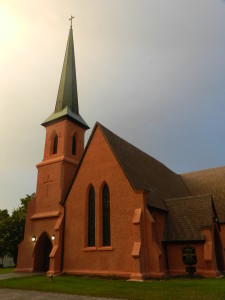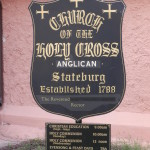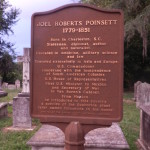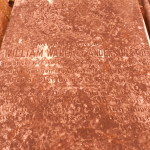
William Ellison started his life with some good fortune, including, oddly enough, choosing his parents wisely and being born at the right time. His father was either Robert Ellison or his son William Ellison, who were white planters in the hill country of South Carolina. Perhaps out of a sense of paternal obligation or by recognizing the gifts of his progeny, the white William Ellison freed his slave in 1816, just four years before South Carolina prohibited slave manumission entirely except by special act of the state legislature. The former master had also arranged, prior to freeing his slave, for a fourteen-year apprenticeship in the craft of cotton gin making, a rare skill that guaranteed the younger William Ellison’s ability to earn a living upon receiving his freedom. The younger William Ellison took advantage of his opportunity, starting his gin manufacturing and repair business in Stateburg and later establishing his own plantation, complete with slaves to maintain it. At the time of the Civil War, he was wealthier than all but a handful of men of his race in America. Our knowledge of his existence is a significant accomplishment in itself, since most of his fellow antebellum Afro-Americans left barely a historical trace—not even marked graves.
I was hoping to see Ellison’s grave, but it is on private property. I was not intrusive enough to try to visit it there, but I settled for the next best thing and stopped by the Stateburg Church of the Holy Cross, the Episcopal church that Ellison attended during his adult life, sitting not in the gallery, where slaves and other free Afro-Americans sat, but on the main floor with the white congregation – in the back. The current structure, built in the 1850s, is an earthen red color and looks like something organic rising from the ground. Behind the church is the graveyard, where many of Ellison’s neighbors were laid to rest, including Dr. W. W. Anderson, who treated Ellison and his family and served as Ellison’s white guardian, the person responsible for guaranteeing Ellison’s good behavior—a requirement for all free Afro-Americans by state statute. It was late in the day when I arrived, and I spent as much time as I could there before the sunlight disappeared, hoping that the pictures I took would turn out.
I thought about the choices that Ellison made in his life. He built his freedom and prosperity on the labor of slaves in both his gin shop and his plantation, turning his back, in essence, on his own race and allying himself with his white neighbors and the small free Afro-American population who lived in comparable circumstances. This seemed like a questionable basis for living, and insofar as humanity is likely to face some kind of afterlife reckoning, I imagined that Ellison would answer for his deeds to someone. Perhaps that someone, I thought, would take into account that he had few, if any, good choices to maintain his freedom and that of his family while living a morally unblemished life. That was not possible in antebellum South Carolina, and life in the free northern states of the period, according to historians, was only marginally better for Afro-Americans, greatly resembling the Jim Crow society that followed the Civil War. I was not sure, given Ellison’s circumstances, if I would have had the fortitude to make a different choice than his, or even if it would have occurred to me to do so.






